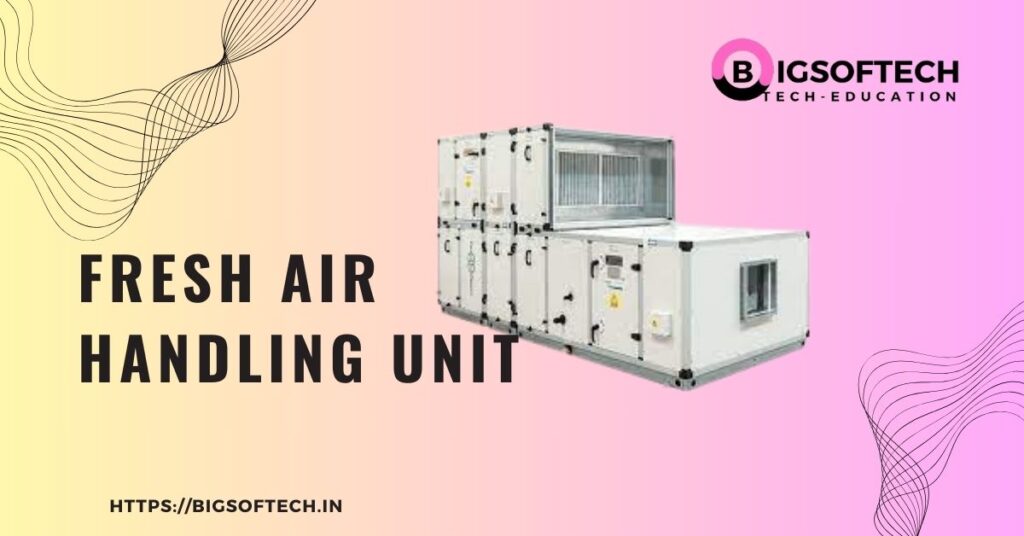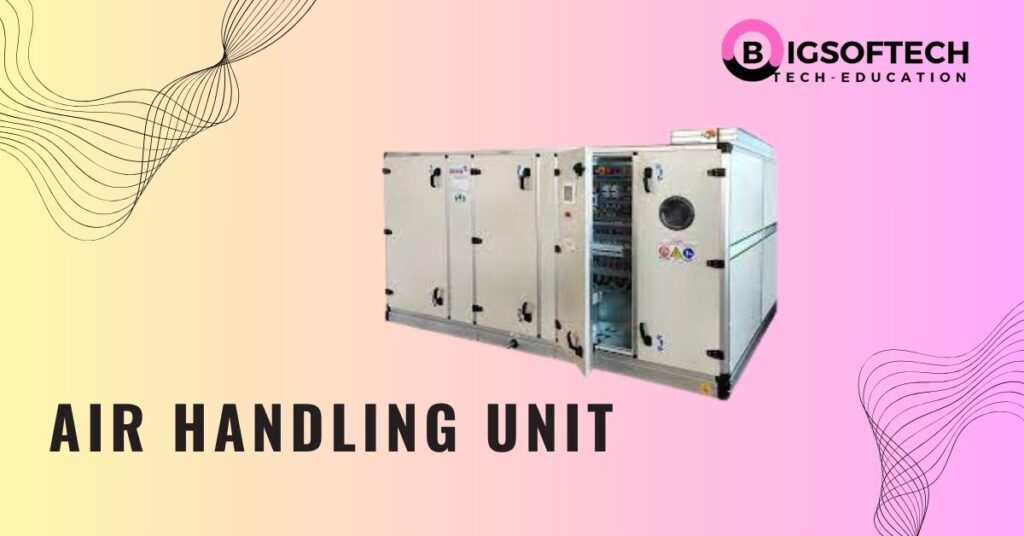Air conditioning systems play a pivotal role in maintaining comfortable indoor environments, especially in large spaces like commercial buildings and residential areas. Among these systems, the Packaged Air Conditioner (PAC) unit stands out for its efficiency, ease of installation, and suitability for various settings.
This article will explain everything you need to know about package AC units, including how they work, why they’re great, and where they’re used.
What is a Packaged Air Conditioner?
A packaged AC, or packaged air conditioning unit, is a comprehensive cooling and heating system designed to efficiently regulate the temperature in significant spaces. Unlike split systems that have separate indoor and outdoor units, a package AC integrates all its components into a single unit, making it a self-contained system.
Components of a Packaged Air Conditioner
A package air conditioning (AC) unit has different parts that work together to keep spaces cool or warm. Here are the main parts:
- Compressor: This part is like the heart of the system. It squeezes the special gas inside to make it hot.
- Condenser Coil: This coil helps to cool down the hot gas from the compressor, turning it into a liquid.
- Evaporator Coil: As the liquid cools, it turns back into a gas in this coil, absorbing heat from the surrounding air.
- Expansion Valve: This valve controls how much of the special gas moves through the system, making sure everything works smoothly.
How Does a Packaged Air Conditioner Work?
- Compressor Stage: The process starts with the compressor, often referred to as the heart of the AC system. The compressor’s primary role is to compress a special refrigerant gas, usually a type of Freon, making it highly pressurized. When the gas is compressed, its temperature increases significantly.
- Condensation Stage: The now hot and pressurized gas moves to the condenser coil, located outside the building. Here, the gas encounters ambient air or a fan-cooled coil. As the hot gas comes into contact with the cooler air outside, it releases heat and transforms back into a liquid state. This liquid then travels through the system.
- Expansion Valve Stage: The high-pressure liquid refrigerant reaches the expansion valve. This valve regulates and controls the flow of refrigerant into the evaporator coil. It also reduces the pressure of the refrigerant, allowing it to expand and transform back into a gas.
- Evaporation Stage: The cooled and expanded gas now enters the evaporator coil, usually located indoors. As the gas absorbs heat from the surrounding indoor air, it cools down the air temperature. The fan blows chilled air created through this process into the various rooms or spaces within the building through ducts.
- Recirculation and Reheating: The system circulates the cooled air throughout the building, while it pulls the warm air back into the system through return ducts. Some systems may incorporate a reheating element, where the air passes over a heat exchanger to balance the temperature before the system redistributes it into the space.
- Continuous Cycle: This entire process continues in a cycle as long as the AC system is running. The refrigerant gas continually circulates, alternating between liquid and gas states, absorbing and releasing heat, and maintaining the desired temperature indoors.
- Thermostat Control: The system’s thermostat monitors the indoor temperature and signals the AC unit to cycle on or off to maintain the set temperature, ensuring comfort levels are met.
Advantages of Package AC
- Package AC units provide convenience by housing all components (compressor, condenser, evaporator, and fan) in one unit, making installation easier compared to split AC systems.
- Package AC units fit well into smaller spaces or areas with limited room for installation because they contain all components in a single unit, unlike split systems that have separate indoor and outdoor units.
- Installing a package AC system proves relatively straightforward compared to split systems because it avoids intricate connections between indoor and outdoor units.
- Some package AC units aim for energy efficiency, effectively reducing electricity bills while efficiently cooling the space.
- Package AC units can produce lower noise levels compared to split systems because they house all components in a single outdoor unit, reducing noise transmission into the building’s interior.
- Technicians find maintenance and servicing easier as they can access and maintain all components housed together in the unit.
Package AC for Commercial Buildings and Residential Spaces
Commercial Buildings:
- Space Utilization: In commercial spaces, where there might be limited room for multiple units,. Package AC systems are advantageous as they combine all components into one unit.
- Ease of Installation: For larger commercial areas, installing package AC units is often more convenient and quicker.
- Maintenance: Maintenance of package ACs in commercial settings can be simpler. Technicians have easier access to all components, reducing downtime and potential disruptions.
- Customization: These systems come in various sizes and configurations. Allowing businesses to select units that best match their cooling needs, whether for small offices or larger commercial complexes.
Residential Spaces:
- Space Efficiency: In homes where space might be limited, package AC units are a practical choice as they occupy less space than split systems with separate indoor and outdoor units.
- Ease of Installation: Installing a package AC system is straightforward, making it a suitable option for homeowners who want a simpler setup without extensive installation procedures.
- Quiet Operation: Package ACs can provide quieter operation since the entire system is housed in one unit, minimizing noise transmission into the living space.
- Energy Efficiency Options: There are energy-efficient models available in the market that help homeowners save on electricity bills while effectively cooling their homes.
Installation Process of Package AC
- Site Inspection and Preparation: Before installation, a professional HVAC technician assesses the location to determine the best placement for the package AC unit. They’ll consider factors such as available space, structural support, and accessibility for maintenance.
- Unit Placement: The chosen location should have proper clearance for airflow and service access. The technician will place the package AC unit on a stable surface, often a concrete pad or mounting brackets, ensuring it’s level and securely positioned.
- Electrical Connections: The technician will connect the unit to the electrical supply following local building codes and manufacturer specifications. This involves wiring the unit to a dedicated circuit breaker to ensure safe and reliable operation.
- Ductwork Installation (if required): In some instances, the technician connects ductwork to the package AC unit. Ensuring proper sizing and sealing to distribute cooled air and prevent air leaks in the building.
- Refrigerant Lines: Technicians connect refrigerant lines between the indoor and outdoor unit sections. In package AC, ensure insulation and check for leaks to maintain integrity
- Condensate Drain: The technician will install a condensate drain line to remove excess moisture produced during the cooling process.
- Testing and Commissioning: After installation, the technician performs tests to ensure the unit operates correctly. This includes checking the airflow, thermostat settings, cooling performance, and making any necessary adjustments.
- Completion and Cleanup: Once everything is in working order, the installation area is cleaned up, and any debris or packaging materials are removed.
Maintenance of Package AC
Maintaining a package air conditioning (AC) system is essential for optimal performance and longevity. Here are the key maintenance steps:
- Regular Filter Cleaning/Replacement: Clean or replace air filters regularly, typically every 1-3 months or as recommended by the manufacturer. This helps maintain good airflow and efficiency while improving indoor air quality.
- Coil Cleaning: Periodically clean the evaporator and condenser coils. Dust, dirt, and debris can accumulate, reducing the system’s efficiency. Use a soft brush or vacuum to remove debris.
- Check and Clean Condensate Drain: Ensure the condensate drain is clear of blockages, as clogs can lead to water leaks or humidity issues. Clean the drain line to prevent backups.
- Inspect and Tighten Electrical Connections: Over time, electrical connections can loosen, affecting the system’s performance. Inspect and tighten electrical connections to prevent electrical issues or system malfunctions.
- Inspect Refrigerant Levels: Monitor refrigerant levels to ensure they are at the manufacturer’s specified levels. Low refrigerant can indicate a leak, which should be addressed by a professional technician.
- Check Fan Blades and Belts: Inspect fan blades and belts for wear and tear. Replace damaged belts and ensure the fan blades are clean and properly balanced for efficient operation.
- Thermostat Calibration: Verify the thermostat’s accuracy and recalibrate it if necessary. An accurately calibrated thermostat ensures proper temperature control and efficient operation.
- Professional Maintenance Service: Schedule periodic professional maintenance by an HVAC technician. They can perform comprehensive inspections and tune-ups and address any potential issues before they escalate.
- Keep Surrounding Area Clear: Ensure the area around the package AC unit is clear of debris, vegetation, or access for maintenance.
Conclusion
Package air conditioning units provide an efficient, versatile, and cost-effective solution for both commercial and residential cooling and heating needs. Additionally. Their ease of installation, minimal maintenance requirements, and adaptability to various spaces make them a popular choice in the HVAC industry
FAQs
- Are package AC units suitable for small spaces like individual rooms?
- Package AC units are ideal for larger spaces due to their capacity to cool or heat significant areas efficiently. For individual rooms, other AC systems like window or split units might be more appropriate.
- Can I install a package AC unit on my own?
- While some DIY enthusiasts might attempt installation, it’s highly recommended to seek professional help for installing package AC units. Professional installation ensures proper setup and optimal performance.
- Do packaged AC units consume a lot of electricity?
- The energy consumption of Package AC units can vary based on factors like size, efficiency, and usage patterns. Opting for energy-efficient models and regular maintenance can help manage electricity consumption.
- What are the typical maintenance tasks for a package AC unit?
- Routine maintenance tasks for Package AC units include regularly cleaning filters, checking refrigerant levels, inspecting coils, and ensuring proper airflow.
- How long do packaged AC units usually last?
- The lifespan of a package AC unit can vary based on usage, maintenance, and quality. On average, these units can last between 15 to 20 years with proper care and maintenance.



